-
192 results in Exploration of ImmunologySort byMost Downloaded
 Exploring the possible link between the spike protein immunoglobulin G4 antibodies and cancer progressionOpen AccessReviewRepeated inoculation with messenger RNA (mRNA) vaccines elicits immunoglobulin G4 (IgG4) antibody production. Such an increase in the concentration of specific and non-specific IgG4 antibodies allow [...] Read more.Mikolaj Raszek ... Alberto Rubio-CasillasPublished: April 25, 2024 Explor Immunol. 2024;4:267–284
Exploring the possible link between the spike protein immunoglobulin G4 antibodies and cancer progressionOpen AccessReviewRepeated inoculation with messenger RNA (mRNA) vaccines elicits immunoglobulin G4 (IgG4) antibody production. Such an increase in the concentration of specific and non-specific IgG4 antibodies allow [...] Read more.Mikolaj Raszek ... Alberto Rubio-CasillasPublished: April 25, 2024 Explor Immunol. 2024;4:267–284
DOI: https://doi.org/10.37349/ei.2024.00140
This article belongs to the special issue Old and New Paradigms in Viral Vaccinology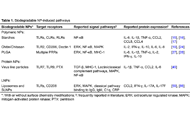 Immunology of biodegradable nanoparticles: a brief overview on a wide growing fieldOpen AccessReviewImmunity is continuously evolving by evolutionary mechanisms shaped by pathogenic stimuli of different kinds. Man-made nanomaterials (NMs) have been developed in the last decades and represent a nov [...] Read more.Anissa Pisani, Giuseppe BardiPublished: April 30, 2021 Explor Immunol. 2021;1:48–60
Immunology of biodegradable nanoparticles: a brief overview on a wide growing fieldOpen AccessReviewImmunity is continuously evolving by evolutionary mechanisms shaped by pathogenic stimuli of different kinds. Man-made nanomaterials (NMs) have been developed in the last decades and represent a nov [...] Read more.Anissa Pisani, Giuseppe BardiPublished: April 30, 2021 Explor Immunol. 2021;1:48–60
DOI: https://doi.org/10.37349/ei.2021.00006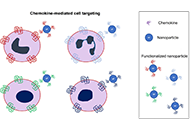 Chemokines and nanomaterials: interaction for useful immune-applicationsOpen AccessReviewChemokines are homeostatic or inflammatory small proteins regulating immune cell migration and are structurally characterized by cysteine disulfide bridges. Around 50 human chemokines binding almost [...] Read more.Giuseppe BardiPublished: August 31, 2022 Explor Immunol. 2022;2:637–647
Chemokines and nanomaterials: interaction for useful immune-applicationsOpen AccessReviewChemokines are homeostatic or inflammatory small proteins regulating immune cell migration and are structurally characterized by cysteine disulfide bridges. Around 50 human chemokines binding almost [...] Read more.Giuseppe BardiPublished: August 31, 2022 Explor Immunol. 2022;2:637–647
DOI: https://doi.org/10.37349/ei.2022.00073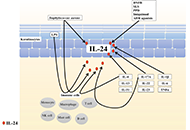 The role of interleukin-24 in atopic dermatitisOpen AccessReviewAtopic dermatitis (AD) is characterized by skin barrier disruption, type 2 immune dysregulation, chronic pruritus, and abnormal colonization by Staphylococcus aureus (S. aureus). Tapinarof, an aryl [...] Read more.Yen Hai Vu ... Gaku TsujiPublished: April 30, 2021 Explor Immunol. 2021;1:4–15
The role of interleukin-24 in atopic dermatitisOpen AccessReviewAtopic dermatitis (AD) is characterized by skin barrier disruption, type 2 immune dysregulation, chronic pruritus, and abnormal colonization by Staphylococcus aureus (S. aureus). Tapinarof, an aryl [...] Read more.Yen Hai Vu ... Gaku TsujiPublished: April 30, 2021 Explor Immunol. 2021;1:4–15
DOI: https://doi.org/10.37349/ei.2021.00002
This article belongs to the special issue Cross Talk Among Skin Cells and Immune Cells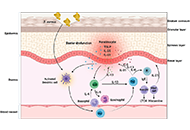 Crosstalk between keratinocytes and immune cells in inflammatory skin diseasesOpen AccessReviewCutaneous homeostasis is maintained by dynamic cellular communications between different cell types in the skin through interactions with various mediators, including cytokines, chemokines and antim [...] Read more.Xinhui Ni, Yuping LaiPublished: December 31, 2021 Explor Immunol. 2021;1:418–431
Crosstalk between keratinocytes and immune cells in inflammatory skin diseasesOpen AccessReviewCutaneous homeostasis is maintained by dynamic cellular communications between different cell types in the skin through interactions with various mediators, including cytokines, chemokines and antim [...] Read more.Xinhui Ni, Yuping LaiPublished: December 31, 2021 Explor Immunol. 2021;1:418–431
DOI: https://doi.org/10.37349/ei.2021.00028
This article belongs to the special issue Cross Talk Among Skin Cells and Immune Cells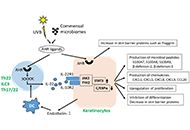 Interleukin-22 and keratinocytes; pathogenic implications in skin inflammationOpen AccessReviewInterleukin (IL)-22 is produced from immune cells such as T helper (Th)22 cells, Th17/22 cells, and group 3 innate lymphoid cells. IL-22 signals via the IL-22 receptor 1 (IL-22R1) and the IL-10 rece [...] Read more.Masutaka Furue, Mihoko FuruePublished: April 30, 2021 Explor Immunol. 2021;1:37–47
Interleukin-22 and keratinocytes; pathogenic implications in skin inflammationOpen AccessReviewInterleukin (IL)-22 is produced from immune cells such as T helper (Th)22 cells, Th17/22 cells, and group 3 innate lymphoid cells. IL-22 signals via the IL-22 receptor 1 (IL-22R1) and the IL-10 rece [...] Read more.Masutaka Furue, Mihoko FuruePublished: April 30, 2021 Explor Immunol. 2021;1:37–47
DOI: https://doi.org/10.37349/ei.2021.00005
This article belongs to the special issue Cross Talk Among Skin Cells and Immune Cells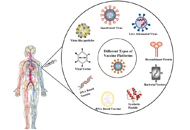 Immune responses induced by different vaccine platforms against coronavirus disease-19Open AccessReviewThere have been significant developments in the design of nanostructured scaffolds for eliciting robust immune responses named vaccine. The technique is to produce strong immune responses is to mani [...] Read more.Eknath D. Ahire, Sanjay J. KshirsagarPublished: October 31, 2021 Explor Immunol. 2021;1:243–257
Immune responses induced by different vaccine platforms against coronavirus disease-19Open AccessReviewThere have been significant developments in the design of nanostructured scaffolds for eliciting robust immune responses named vaccine. The technique is to produce strong immune responses is to mani [...] Read more.Eknath D. Ahire, Sanjay J. KshirsagarPublished: October 31, 2021 Explor Immunol. 2021;1:243–257
DOI: https://doi.org/10.37349/ei.2021.00016
This article belongs to the special issue Vaccine-induced Immune Responses Against SARS-CoV-2 Infections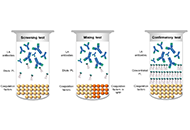 Analytical dilemmas in lupus anticoagulant detectionOpen AccessReviewAccurate lupus anticoagulant (LA) detection is crucial to antiphospholipid syndrome (APS) diagnosis. Detection is based on LA functional behavior in coagulation assays irrespective of epitope specif [...] Read more.Gary W. MoorePublished: August 31, 2023 Explor Immunol. 2023;3:300–324
Analytical dilemmas in lupus anticoagulant detectionOpen AccessReviewAccurate lupus anticoagulant (LA) detection is crucial to antiphospholipid syndrome (APS) diagnosis. Detection is based on LA functional behavior in coagulation assays irrespective of epitope specif [...] Read more.Gary W. MoorePublished: August 31, 2023 Explor Immunol. 2023;3:300–324
DOI: https://doi.org/10.37349/ei.2023.00104
This article belongs to the special issue Autoantibodies Associated to Thrombosis and Hemostasis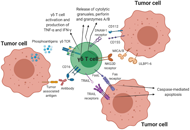 Allogeneic gamma delta T cells as adoptive cellular therapy for hematologic malignanciesOpen AccessReviewCancer immunotherapy, especially T-cell driven targeting, has significantly evolved and improved over the past decade, paving the way to treat previously refractory cancers. Hematologic malignancies [...] Read more.Navdeep Jhita, Sunil S. RaikarPublished: June 07, 2022 Explor Immunol. 2022;2:334–350
Allogeneic gamma delta T cells as adoptive cellular therapy for hematologic malignanciesOpen AccessReviewCancer immunotherapy, especially T-cell driven targeting, has significantly evolved and improved over the past decade, paving the way to treat previously refractory cancers. Hematologic malignancies [...] Read more.Navdeep Jhita, Sunil S. RaikarPublished: June 07, 2022 Explor Immunol. 2022;2:334–350
DOI: https://doi.org/10.37349/ei.2022.00054
This article belongs to the special issue Interplay of γδ T cells and Tumor Cells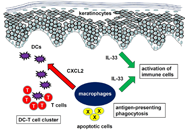 Macrophages and fibroblasts underpin skin immune responsesOpen AccessReviewThere are various types of skin immune responses including inflammatory skin diseases and skin malignancy. Macrophages and fibroblasts are skin resident cells that had been overlooked in terms of im [...] Read more.Makoto SugayaPublished: August 31, 2021 Explor Immunol. 2021;1:226–242
Macrophages and fibroblasts underpin skin immune responsesOpen AccessReviewThere are various types of skin immune responses including inflammatory skin diseases and skin malignancy. Macrophages and fibroblasts are skin resident cells that had been overlooked in terms of im [...] Read more.Makoto SugayaPublished: August 31, 2021 Explor Immunol. 2021;1:226–242
DOI: https://doi.org/10.37349/ei.2021.00015
This article belongs to the special issue Cross Talk Among Skin Cells and Immune Cells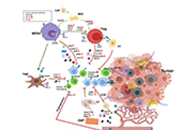 Immunosuppressive microenvironment in oral cancer: implications for cancer immunotherapyOpen AccessReviewHead and neck squamous cell carcinoma (HNSCC) is a relatively widespread cancer with high mortality rates. Many patients with locally advanced disease are treated with combinations of surgery, radia [...] Read more.Shalini K. Sureshbabu ... Shubhada V. ChiplunkarPublished: August 31, 2021 Explor Immunol. 2021;1:166–198
Immunosuppressive microenvironment in oral cancer: implications for cancer immunotherapyOpen AccessReviewHead and neck squamous cell carcinoma (HNSCC) is a relatively widespread cancer with high mortality rates. Many patients with locally advanced disease are treated with combinations of surgery, radia [...] Read more.Shalini K. Sureshbabu ... Shubhada V. ChiplunkarPublished: August 31, 2021 Explor Immunol. 2021;1:166–198
DOI: https://doi.org/10.37349/ei.2021.00013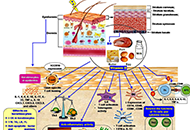 Vitamin D and immunomodulation in the skin: a useful affirmative nexusOpen AccessReviewSkin is the largest organ of the body having multifunctional activities. It has a dynamic cellular network with unique immunologic properties to maintain defensive actions, photoprotection, immune r [...] Read more.Saptadip SamantaPublished: June 30, 2021 Explor Immunol. 2021;1:90–111
Vitamin D and immunomodulation in the skin: a useful affirmative nexusOpen AccessReviewSkin is the largest organ of the body having multifunctional activities. It has a dynamic cellular network with unique immunologic properties to maintain defensive actions, photoprotection, immune r [...] Read more.Saptadip SamantaPublished: June 30, 2021 Explor Immunol. 2021;1:90–111
DOI: https://doi.org/10.37349/ei.2021.00009
This article belongs to the special issue Cross Talk Among Skin Cells and Immune Cells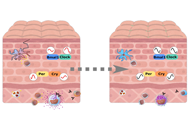 Skin and immune cells crosstalk via circadian regulationsOpen AccessReviewBoth innate and adaptive immune cells exist in the skin, predominantly in the dermis layer. Recent studies have focused on how and which circadian rhythms contribute to maintain good health. Over re [...] Read more.Kanami OriharaPublished: October 31, 2021 Explor Immunol. 2021;1:285–294
Skin and immune cells crosstalk via circadian regulationsOpen AccessReviewBoth innate and adaptive immune cells exist in the skin, predominantly in the dermis layer. Recent studies have focused on how and which circadian rhythms contribute to maintain good health. Over re [...] Read more.Kanami OriharaPublished: October 31, 2021 Explor Immunol. 2021;1:285–294
DOI: https://doi.org/10.37349/ei.2021.00019
This article belongs to the special issue Cross Talk Among Skin Cells and Immune Cells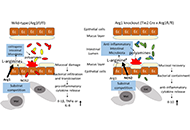 L-arginine as a novel target for clinical intervention in inflammatory bowel diseaseOpen AccessReviewArginase-1 (Arg1) and the inducible nitric oxide synthase 2 (NOS2) compete for the common substrate L-arginine, semi-essential amino acid, and central intestinal metabolite. Both enzymes exhibit var [...] Read more.Björn Nüse, Jochen MattnerPublished: June 30, 2021 Explor Immunol. 2021;1:80–89
L-arginine as a novel target for clinical intervention in inflammatory bowel diseaseOpen AccessReviewArginase-1 (Arg1) and the inducible nitric oxide synthase 2 (NOS2) compete for the common substrate L-arginine, semi-essential amino acid, and central intestinal metabolite. Both enzymes exhibit var [...] Read more.Björn Nüse, Jochen MattnerPublished: June 30, 2021 Explor Immunol. 2021;1:80–89
DOI: https://doi.org/10.37349/ei.2021.00008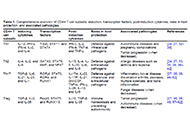 Entrance to the multifaceted world of CD4+ T cell subsetsOpen AccessReviewThis review provides a detailed examination of CD4+ T lymphocyte subsets, crucial components of the immune system originating from the thymus. This study explores the distinct roles and mechanisms o [...] Read more.Murilo Porfírio de Aguiar, Julia Hailer VieiraPublished: March 05, 2024 Explor Immunol. 2024;4:152–168
Entrance to the multifaceted world of CD4+ T cell subsetsOpen AccessReviewThis review provides a detailed examination of CD4+ T lymphocyte subsets, crucial components of the immune system originating from the thymus. This study explores the distinct roles and mechanisms o [...] Read more.Murilo Porfírio de Aguiar, Julia Hailer VieiraPublished: March 05, 2024 Explor Immunol. 2024;4:152–168
DOI: https://doi.org/10.37349/ei.2024.00134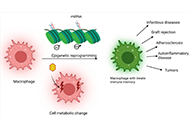 Advances in innate immune memory of macrophagesOpen AccessReviewImmunity is usually classified into two categories: innate immunity and adaptive immunity, distinguished by the process and characteristics of the immunological impact. It was widely assumed that on [...] Read more.Safir Ullah Khan, Munir Ullah KhanPublished: June 28, 2022 Explor Immunol. 2022;2:428–441
Advances in innate immune memory of macrophagesOpen AccessReviewImmunity is usually classified into two categories: innate immunity and adaptive immunity, distinguished by the process and characteristics of the immunological impact. It was widely assumed that on [...] Read more.Safir Ullah Khan, Munir Ullah KhanPublished: June 28, 2022 Explor Immunol. 2022;2:428–441
DOI: https://doi.org/10.37349/ei.2022.00060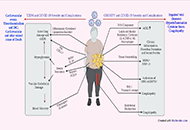 Activation of mucosal immunity and novel prophylactic and therapeutic strategy in combating COVID-19Open AccessReviewCoronavirus disease 2019 (COVID-19) emerges as an expeditiously growing pandemic, in the human population caused by the highly transmissible RNA virus severe acute respiratory syndrome of coronaviru [...] Read more.Swapan K. Chatterjee ... Maria Nilda M. MunozPublished: December 31, 2021 Explor Immunol. 2021;1:374–397
Activation of mucosal immunity and novel prophylactic and therapeutic strategy in combating COVID-19Open AccessReviewCoronavirus disease 2019 (COVID-19) emerges as an expeditiously growing pandemic, in the human population caused by the highly transmissible RNA virus severe acute respiratory syndrome of coronaviru [...] Read more.Swapan K. Chatterjee ... Maria Nilda M. MunozPublished: December 31, 2021 Explor Immunol. 2021;1:374–397
DOI: https://doi.org/10.37349/ei.2021.00025
This article belongs to the special issue Vaccine-induced Immune Responses Against SARS-CoV-2 Infections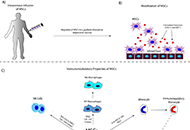 Interplay between mesenchymal stromal cells and immune system: clinical applications in immune-related diseasesOpen AccessReviewMesenchymal stromal cells (MSCs) are a mesodermal stem cell population, with known self-renewal and multilineage differentiation properties. In the last century, MSCs have been widely used in regene [...] Read more.Panagiotis Mallis ... Catherine Stavropoulos GiokasPublished: June 30, 2021 Explor Immunol. 2021;1:112–139
Interplay between mesenchymal stromal cells and immune system: clinical applications in immune-related diseasesOpen AccessReviewMesenchymal stromal cells (MSCs) are a mesodermal stem cell population, with known self-renewal and multilineage differentiation properties. In the last century, MSCs have been widely used in regene [...] Read more.Panagiotis Mallis ... Catherine Stavropoulos GiokasPublished: June 30, 2021 Explor Immunol. 2021;1:112–139
DOI: https://doi.org/10.37349/ei.2021.00010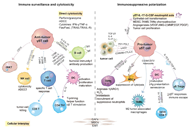 Novel insights based on the plasticity of γδ T cells in the tumor microenvironmentOpen AccessReviewγδ T cells express unique T cell receptor (TCR) γ and TCR δ chains, with structural and functional heterogeneity. Taking advantage of the diverse γδ TCR repertoire or other ligand-receptor interactions, γδ T cells can reco [...] Read more.Yue Wang ... Wei HePublished: February 24, 2022 Explor Immunol. 2022;2:98–132
Novel insights based on the plasticity of γδ T cells in the tumor microenvironmentOpen AccessReviewγδ T cells express unique T cell receptor (TCR) γ and TCR δ chains, with structural and functional heterogeneity. Taking advantage of the diverse γδ TCR repertoire or other ligand-receptor interactions, γδ T cells can reco [...] Read more.Yue Wang ... Wei HePublished: February 24, 2022 Explor Immunol. 2022;2:98–132
DOI: https://doi.org/10.37349/ei.2022.00039
This article belongs to the special issue Interplay of γδ T cells and Tumor Cells The future of complement therapeuticsOpen AccessReviewComplement is both evolutionary and scientifically old. It predates the adaptive immunity by some 600 million years and was first described in 1905 by Jules Bordet and Paul Ehrlich. For the most of [...] Read more.Martin Kolev ... Pascal DeschateletsPublished: October 18, 2024 Explor Immunol. 2024;4:577–615
The future of complement therapeuticsOpen AccessReviewComplement is both evolutionary and scientifically old. It predates the adaptive immunity by some 600 million years and was first described in 1905 by Jules Bordet and Paul Ehrlich. For the most of [...] Read more.Martin Kolev ... Pascal DeschateletsPublished: October 18, 2024 Explor Immunol. 2024;4:577–615
DOI: https://doi.org/10.37349/ei.2024.00161
This article belongs to the special issue The Complement System in Health and Disease -
